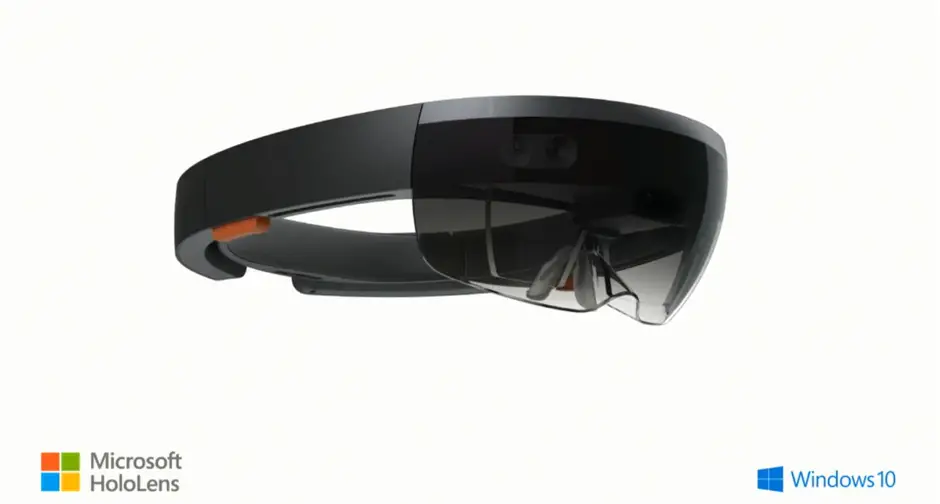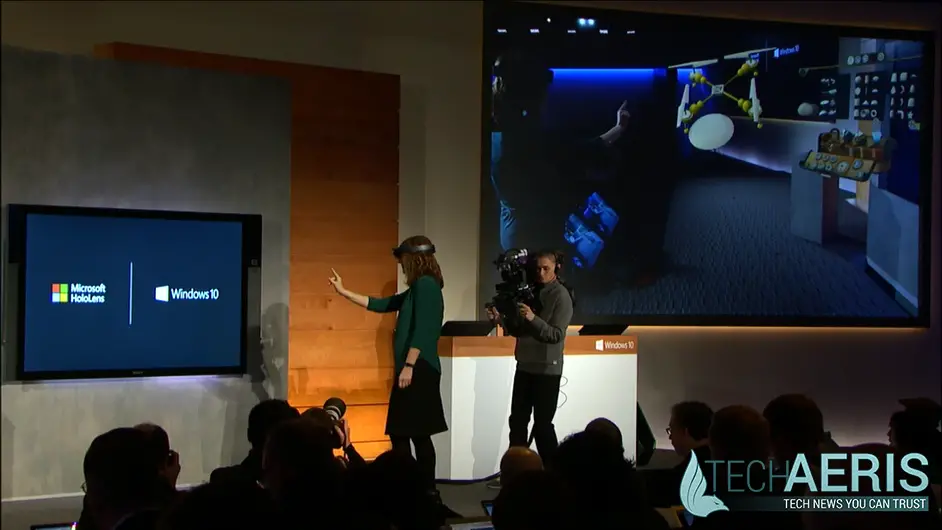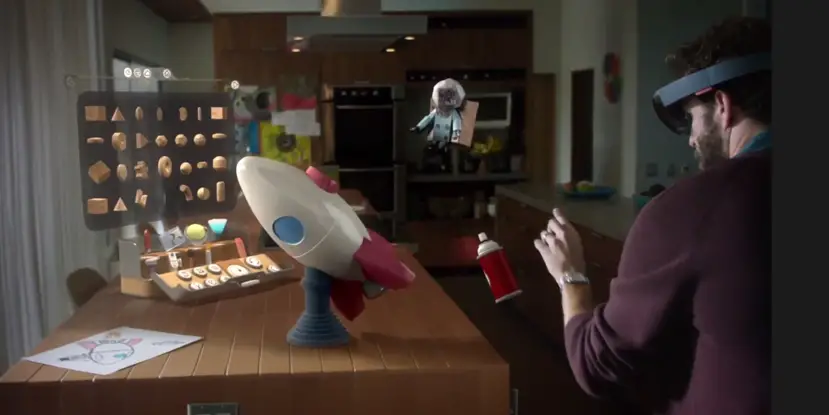Perhaps the biggest, and most surprising, news to come out of the Windows 10 briefing today was the announcement of Windows Holographic. Somehow Microsoft has managed to work on this technology for years without it leaking from their top secret lab below the Microsoft Visitor Center.
Alex Kipman, Technical Fellow for new device categories in the Operating System Group at Microsoft, took the stage to make the announcement and started off by asking some questions which have driven the project. Can we make technology more transparent? Can we make it more powerful by making your digital content part of your physical life? What if we could bring technology into OUR world?
In the past, we’ve been finding new ways to use technology to our advantage, and – as Kipman puts it – each advancement is decreasing the distance between us and technology. Microsoft doesn’t want to put us into virtual worlds, they want to blend the digital world with our real world. And they plan on doing that by using hologram technology as can be seen in the video below.
https://www.youtube.com/watch?v=0D98KxBxwGY
Microsoft is hoping that with the HoloLens technology we can find new ways to interact, create, innovate, and explore. As seen in the video above, the possibilities are endless. Architects can walk around their designs while clients comment or watch from afar, surgeons can learn procedures without having to pick up a scalpel, living rooms can be turned into surreal gaming environments.
How does Microsoft plan on making this work? For starters, every Windows 10 device will have Holographic APIs. The Holograms that developers create will be Windows Universal Apps, which will allow them to work across Windows 10 devices. Even though Microsoft is bringing what “was science fiction” into “science fact”, a wearable device will still be required in order to view Holograms in our environments. Microsoft calls it the HoloLens.

The Microsoft HoloLens is unique in that it is untethered (you don’t need to attach it to a computer or sync it with a wireless device), has see-through lens, features spacial sound, advanced sensors, and a high end CPU and GPU. Microsoft went one step further and invented a third processor – the Holographic Processing Unit, or HPU for short. Everything needed to share, consume or experience holograms is self-contained within the HoloLens.
Microsoft also announced and showcased HoloStudio which allows anyone to create holograms and then 3D print their creations after wards. Using HoloStudio is supposedly easy, all you do is point, tap, gesture, speak, and look at your object to create it. According to Microsoft, HoloStudio can “unleash the creativity in all of us”. For part of the development, Microsoft partnered with NASA’s Jet Propulsion Laboratory and the Mars Curiosity Rover program, allowing JPL to virtually explore the surface of the red planet.

The possibilities with HoloLens are endless. People will be able to Skype with it, play Minecraft and other games, collaborate on technical projects, and to be perfectly honest, who knows what else. Price of course will be a major consideration in wide scale adoption, but Microsoft has just raised the bar in the virtual computing space and it will be interesting to see how companies like Google (Glass) and Oculus Rift respond.
https://www.youtube.com/watch?v=aAKfdeOX3-o
What do you think of Microsoft’s HoloLens announcement today? Let us know in the comments below, or on Google+, Twitter, or Facebook.
Last Updated on November 27, 2018.











Comments are closed.